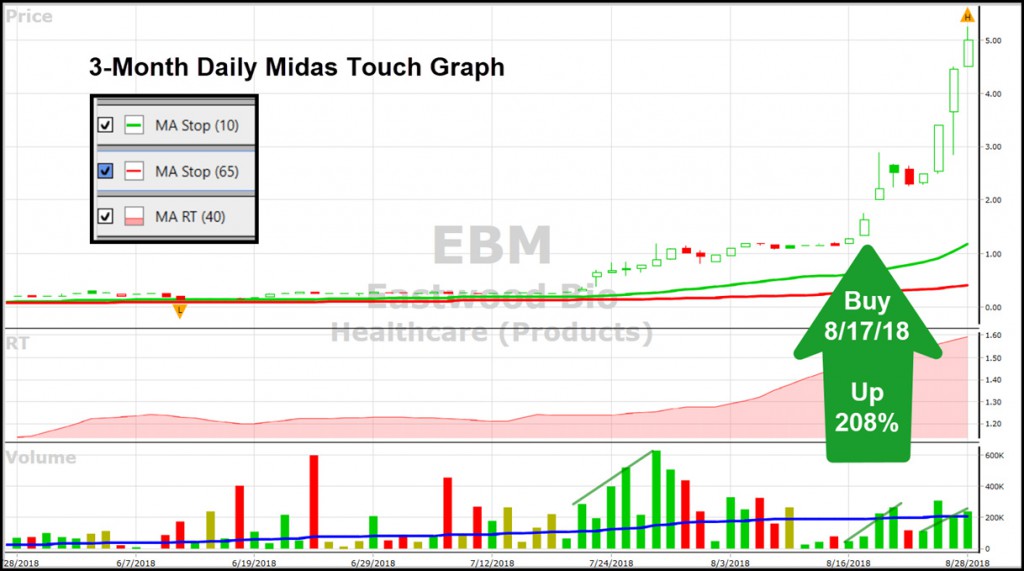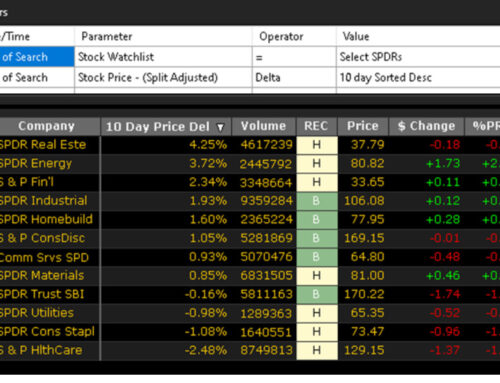I consider myself primarily a long-term investor. I have been following a strategy like VectorVest’s Worry-Free Investing trading system since before I knew about VectorVest. Buy quality dividend payers, hold them forever unless they start to crater for good reason, and reinvest the dividends. Stock selection has never been easier since we began a few years ago to fully understand the overriding importance of Relative Safety. Investing for the long-term is a terrific strategy; one that I have been pleased to teach in our Retirement-focused workshops and webinars.
Is it possible to use swing trades to boost your retirement account?
The answer is yes and here’s why. Swing Trading is a strategy that focuses on taking smaller gains in short-term trends and cutting losses quickly with pre-determined Stop-Prices, usually just below a recent Candlestick or a support zone. Long-term investors often think Swing Trading is too risky. The idea of frequent trading for smaller profits per trade and paying all those commissions might seem like there isn’t enough upside to justify the potential losses. However, while the gains might be smaller, they can add up over time and give your retirement account a boost.
Rather than targeting and holding out for large gains and dividends, the profit goal is more modest, in the neighbourhood of 10%, even just 5% or less in difficult markets. Your focus isn’t on gains developing over several weeks or months, rather, your desired holding period is 5 to 10 days, although three to four weeks and occasionally longer fits the definition if the prevailing uptrend remains strong. A stock that moves up quickly can be held for a bigger gain, or partial profits can be taken while giving the remaining position room to run.
In this way, you can make a lot of small wins and the occasional large win, all of which adds up to big returns over time. Think about it. If you can average 5% to 10% every two to three weeks during favourable market timing, you’ll be netting in the order of 10% to 15% just about every month. Even starting with small position sizes, consistent gains like that can pay for your next vacation or grow your retirement account quickly.
Of course, smaller gains can only boost returns if losses are kept even smaller. Swing Traders often take losses quickly at a maximum of 2% to 3%. This will keep you at a 2-to-1 or 3-to-1 reward to risk ratio, a sensible portfolio management rule for success.
Start with the basics. Your swing trading strategy should start with good data, not more data.
Where do you find the best stocks for Swing Trading? Top VST and CI stocks from the Stock Viewer is always a good source. High CI Prospects and HCIP Favorites WatchLists deliver good candidates, and, Midas Touch stocks from the Cherry Picking WatchList Folder are high momentum plays highly well suited for Swing Trades. UniSearch Trends -New Stuff, Aggressive and Delta searches will yield good candidates, and of course Derby subscribers get good candidates every day in the Jockey Club.
Consider studying Swing Trade candidates using the Midas Touch graph layout using a 1-year daily graph as well as the 3-month graph. Look for the STOP 10-MA to have crossed above the STOP 65-MA and the RT 40-MA rising. This layout shows the price trend and momentum behind it. We showed examples with stocks such as CFX, CAE and CRM:US during our August 11, 2018 International Online User Group Forum. In case you missed it, the summary article titled, A Chart Pattern That Almost Always Works, including the replay link is on our CA Smart Investing Blog at www.vectorvest.ca/blog.
When market conditions are favourable with at least the Primary Wave Up or Green Light Buyer signals, give it a try and see how SWING TRADES CAN BOOST YOUR RETIREMENT ACCOUNT.
Yes! Start my 30-Day Trial Now!










Leave A Comment